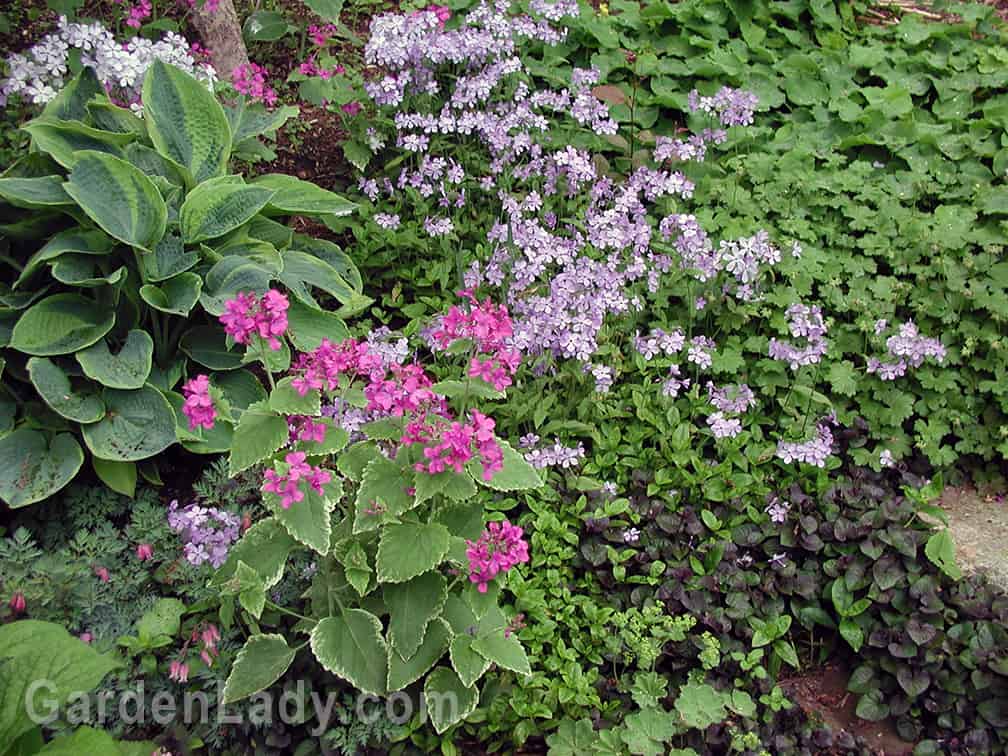Imagine:
Sandra’s beloved dog, Violet had died. Sandra cried every time she walked into the house and Violet wasn’t there to greet her. She cried when she woke up, and for just a second thought she heard Violet’s tail thumping on the floor. She cried when she spread the dog’s ashes in the shade garden, which was Violet’s favorite place to be in the summer time. Then she sat on the bench in this garden and felt sad.
The next week, Sandra went to the garden center, looking for some fill-in perennials. Her eyes were drawn to a some heart-shaped leaves on the bench. The plants were low and spreading. They looked like common violet leaves but were smaller and more distinctive. And then, on one plant she saw a flower. It was a violet. “Perfect!” Sandra thought, and pulled up a tag to see what type of violet it was.
“Viola labradorica,” it read, “commonly known as Labrador violet or American dog violet.” More than perfect.
From then on Sandra smiled every time she went into the shade garden. Her heart still ached, but the violet had spread. It was finding the small areas between other perennials and filling all empty spaces with beauty. “Just like my sweet dog,” Sandra always thought.
Name: Viola labradorica aka Labrador violet, alpine violet, American dog violet
Type of Plant: Low, purple-foliage perennial violet native to eastern Canada and the United States.
Why I love this: I most plants that have a purple-cast to their foliage and this one is no exception. I love the fact that this plant self-seeds and spreads but not aggressively. It doesn’t crowd out other plants, but grows in between and around them. If you’ve got a large open area it will make a nice ground cover, but if you’ve got random spots near the hosta, ferns and foam-flower, this violet will fit into those spaces.
Unlike the more common wild violets, Viola papilionacea, I have not found that the Labrador violet invades turf or chokes out other perennials.
A Word to the Wise: The leaves become more purple with some direct sun, so plant it in places where it gets at least an hour or two of sunlight.

This Viola labradorica is clearly happy in this location. The flowers are larger and darker than most of this species. Since these are seeded in my gardens, there’s also some natural variation between plants.

Here is a clump of the first Labrador violet I planted in Osterville. A fellow master gardener, Eleanor Seaman, gave me a piece of hers. “Plant it where it can take off and do its thing,” she said. Good advice.

I loved the way the Labrador violets played well with other plants. Here it filled in with Hosta, lady’s mantle, variegated Lunaria, Geranium cantabrigiense, and Phlox divaricata ‘Clouds of Perfume.’ In this photo the pinkish-purple Lunaria and the lavender Phlox are in bloom.

0 Comments